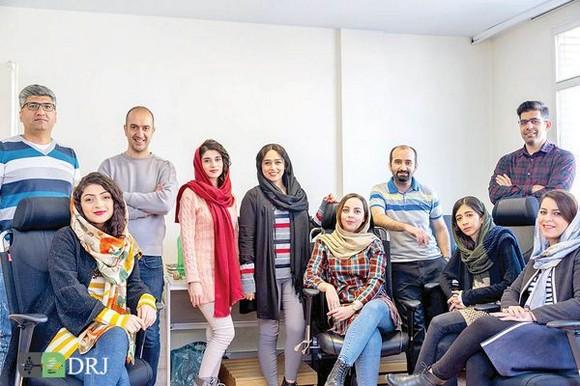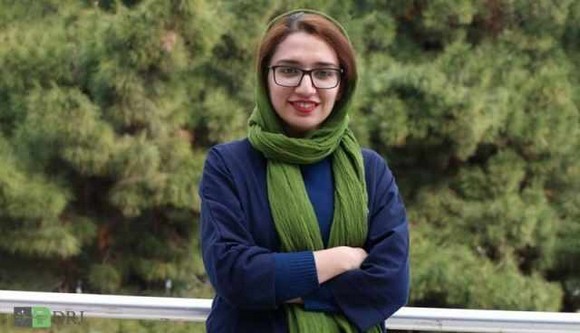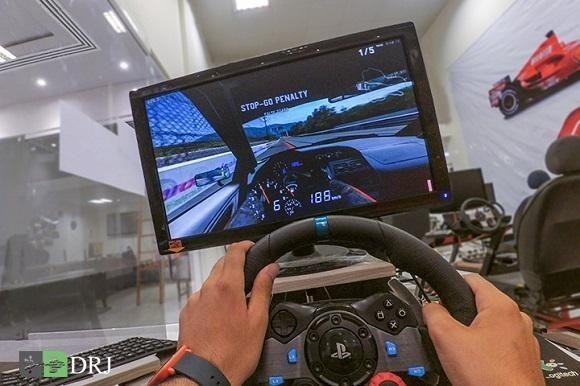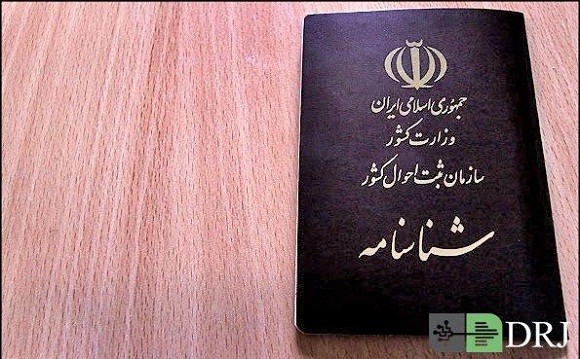Mehdi Golshani
Mehdi Golshani was born in Isfahan , Iran in 1939 . He received his early education in Isfahan and graduated from Tehran University with a B . S . in Physics in 1959 . He then went to the United States to continue studies in physics . He received his Ph . D . in Physics from the University of California in Berkeley in 1969 , with specialization in particle physics . In 1970 , he joined Sharif University of Technology in Tehran and for over three decades has had a strong voice in the direction and design of the educational programs in the science departments . He served as the chairman of the Physics Department during 1973-1975 and 1987-1989 . From 1978-1980 he was the vice chancellor of the university , handling academic and student affairs . Since 1991 he has been the distinguished professor of physics at this university . He founded the Faculty of the Philosophy of Science at Sharif University of Technology , which was established in 1995 , and has been its chairman since then . Since 1989 he has been a member of the Scientific Council for the Institute for Theoretical Physics and Mathematics . He was the head of the Department of Basic Sciences at the Academy of Science 1990-2000 . He received the John Templeton Award for Science and Religion Course Program in 1995 , and has served as a judge for the John Templeton Award for Progress in Religion .
Mehdi Golshani has been the director of the Institute for Humanities and Cultural Studies in Tehran since 1993 and a member of Iran’s High Council for Cultural Revolution since 1996 . He holds membership in the Academy of Sciences ( Islamic Republic of Iran ) , the American Association of Physics Teachers , the Philosophy of Science Association ( Michigan ) , the European Society for the Study of Science and Theology and was Senior Associate , International Center for Theoretical Physics , Triest 1990-1995 .
Golshani has written numerous books and articles on physics , philosophy of physics , science and religion , and science and theology . In all of Golshani’s works , there is a clear attempt to help revive the scientific spirit in the Muslim world . His first book on the relationship between science and religion was the Holy Qur’an and the Sciences of Nature , which first appeared in Persian in 1985 and then was translated into several other languages , including English and Arabic . This book deals with the Islamic conception of knowledge , the references to natural phenomena in the Qur’an and the basic problems of epistemology from the Qur’anic perspective . This book received appreciative recognition from Sheikh Muhammad al-Ghazzali of Egypt .
Golshani has written several treatises on Islamic science . In “How to Make Sense of Islamic Science” ( American Journal of Islamic Social Sciences , 2000 ) he says that Islamic Science has relevance at both the theoretical and practical levels: First , for doing scientific work , we must accept that the world with which science deals is orderly and lawful . This cannot be deduced from science itself . Rather , we need the philosophical assumption that the unknown is similar to the known and that the data of science are applicable for all times and places with confidence . Without these assumptions we cannot generalize our scientific findings .
Second , the applicability of mathematics to the physical world seems miraculous . Why should the symbols created by the human mind be suitable for unravelling the mysteries of the universe and for giving us control over the physical world? It seems that there is an underlying rational built into the fabric of the universe and that there is a tuning between the human mind and the rest of the cosmos , which makes the universe understandable to human beings . Without the existence of these two factors there would be no science .
Third , the question now arises as to why the reality has this built-in order , and why the human mind can comprehend it . One answer would be that this is just the way things are . But , this is not the kind of answer that can give us confidence about the universality of science . A more substantial response is that this is the state of affairs because God made it that way . This is moving on from a metaphysical realism to theism .
Finally , in view of the foregoing considerations , it seems reasonable to claim that science can get its legitimacy in no other context than a theistic one . This is because science requires presuppositions that are only deducible from theism . The history of the development of modern science is a good witness to this fact .
To verify his view that there are many common elements between the Abrahamic faiths , as far as the relation of science and religion is concerned , Golshani approached scientists , philosophers and theologians with eight crucial questions addressing the relationship of science and religion . The responses of thirty two of the many scholars whom he questioned were published in the book Can Science Dispense with Religion? Golshani concluded in this book that both science and religion are important aspects of our lives and neither one should be sacrificed for the sake of the other . There are no conflicts between science and religion if they are properly understood and if the specific domain of each one is correctly recognized and preserved .
For Mehdi Golshani , as a scientist , the search for the absolute Truth is the main task , and the many ways to accomplish this search are all ways of worship . For example , the study of nature for the sake of revealing God’s signs in nature is a kind of worship . The study of natural phenomena teaches the origin and the evolution of the world , the presence of order and harmony in the universe , the presence of a telos for the universe , the significance of humanity , the possibility of resurrection and the interrelatedness of different parts of nature at a deep level , which point to the unicity of creation .
Selected Bibliography
1 . Papers on Physics ( in English )
Golshani , Mehdi , “Excitation of Highly Ionized Atoms by Electron Impact” in Physical Review A , 5 , No . 6 , 1970 , p .
-, “Weinberg’s Angle from Elastic and Quasi-Elastic Scattering of Neutrinos and Antineutrinos off Nucleons” in II Nuovo Cimento , 39 , No . 1 , 1977 , p . 120
-, “A Vector Like Gauge Theory of Weak and Electromagnetic Interactions with Su( 3 ) ´ U( 1 ) Symmetry” in University of Pennsylvania Preprint 0075 T ( 1977 )
-, Langacker , P and Segre , G . “Gauge Theory of Weak and Electromagnetic Interactions with an Su( 3 ) ´ U( 1 ) Symmetry” in Physical Rev . B , 17 , No . 5 , 1978 , p . 1402
-, “ A Quart Potential for Nucleonic Quarks” in Journal of Science , I . R . , Vol . 9 , No . 1 , Winter 1998 , p . 63
-, Shojai , A . “On the Position Operator for Massless Particles” in Annales do la Fondation Louis de Broglie , 22 , No . 4 , 1997 , p . 373
-, Shojai , A . “ Is Superluminal Motion Observable in Relativistic Bohm’s Theory”in Annales de la Fondation Louis de Broglie , 23 , No . 2 , 1998 , p . 81
-, Abolhasani , A . “ Bohmain Time Versus Probabilistic Time” in Acta Physica Polonia B , 29 , 1998
-, Shojai , F . “ On the Geometrization of Bohmian Mechanics: A New Approach to Quantum Gravity” in International J . of Modern Physics A , 13 , No . 4 , 1998 , p . 77
-, Shojai , F . “On the General Covariance in Bohmian Quantum Gravity” in International J . of Modern Physics A , 13 , No . 13 , 1998 , p . 2135
-, Shojai , A . and Shojai , F . “Conformal Transformations and Quantum Gravity” in Modern Phys . Letters A , 13 , No . 34 , 1998 , p . 2725
-, Shojai , A . and Shojai , F . “Scalar-Tensor Theories and Quantum Gravity” in Modern Physics Letters A , 13 , No . 36 , 1998 , p . 2915
-, Shojai , A . and Shojai , F . “Non-Local Effects in Quantum Gravity” in Modern Physics Letters A , 13 , No . 37 , 1998 , p . 2965
-, Abolhasani , A . “ Born’s Principle , Action-Reaction Problem and Arrow of Time” in Foundation of Physics Letters , 12 , No . 3 , 1999 , p . 299
-, Motavali , H . and Salehi , H . “Conformal Invariance and Quantum Aspects of Matter” accepted for publication in International Journal of Modern Physics A .
-, Motavali , H and Salehi , H . “Conformal Invariance and Wave-Particle Duality” in Modern Physics Letters A , 14 , No . 36 , 1999 . p . 2481
-, Abolhasani , M . “ Tunneling Times in the Copenhagen Interpretation of Quantum Mechanics” accepted for publication in Physical Review A , June 2000
2 . Papers on Science and Theology ( in English )
-, “The Scientific Dimension of the Qur’an” in Al-Tawhid , Vol . V , No . 1 , 1408
-, “Science and Muslim Ummah” in Al-Tawhid , Vol . 1 , No . 1 , 1404
-, “ Philosophy of Science: A Qur’anic Perspective” in Al-Tawhid , Vol . II , No . 1 , 1405
-, “The Significance of the Spiritual Life from the Qur’anic Outlook” in Islamic Thought and Scientific Creativity , Vol . 7 , No . 4 , 1996
-, “ The Significance of Physical Sciences in Islamic Outlook and the Need for a Renaissance in Islamic Polity” in Islamic Thought and Creativity , Vol . 5 , No . 1 , 1994 , p . 73
-, “ God and Contemporary Physicists” in Islamic Thought and Creativity , Vol . 6 , No . 2 , 1995 , p . 7
-, “How I Understand the Study of Science as a Muslim” in CTNS Bulletin , 17 . 4 , Fall 1977 , p . 6
-, “ Science and the Spiritual Quest: A Muslim Perspective” in Science and Spirit , Vol . 9 , No . 5 , Dec . 1998 , p . 40
-, “How to Make Sense of `Islamic Science’” in American Journal of Islamic Social Sciences , Vol . 17 , Fall 2000 , p . 1
-, “Islam and the Sciences of Nature: Some Fundamental Questions” in Islamic Studies , Vol . 39 , Winter 2000 , No . 4 , p . 597
3 . Chapter of a Book ( in English )
-, “The Sciences of Nature in an Islamic Perspective” in The Concept of Nature in Science & Theology ( SSTh 4/1996 ) , ed . by N . H . Gregersen et al . ( Geneva: Labor et Fides , 1998 ) , pp . 56-62
-and Shojai , A . “ Direct Particle Quantum Interaction” in Contemporary Fundamental Physics , 1 , ed . by V . V . Dvoeglazor ( Huntington , New York: Nova Publishers , Inc . , 2000 ) , p . 270
-, “Ways of Understanding Nature in the Qur’anic Perspective” in The Interplay between Scientific and Theological Worldviews ( SSTh 6/1998 ) , ed . by N . H . Gregersen et al . ( Geneva: Labor et Fides , 1999 ) , p . 183
-, “Philosophy of Science from the Qur’anic Perspective” in Towards Islamization of Disciplines ( Hendon , Virginia: International Institute of Islamic Thought , 1989 ) , p . 71
-, “ Theistic Science” in God for the Twenty First Century ( USA: John Templeton Foundation , 2000 )
— , “ Have Physicists Been Able to Dispense with Philosophy? in Recent Advances in Relativity Theory , ed . by M . C . Duffy & M . Wegener ( Palm Harbor , Fl . : Hadronic Press , 2001 ) p . 90 .
— , The Ladder of God in Faith in Science: Scientists Search for Truth ( London: Routledge , Fall 2001 ) .
-, “Creation in the Islamic Outlook” in God , Life , and the Cosmos: Christian and Islamic Perspectives ( to be published )
-, “Causality in the Islamic Outlook and in Modern Physics” in Studies in Science and Theology , Vol . 8 , ed . by N . H . Gregersen ( ESSSAT , Fall 2001 )
4 . Books ( in English )
-, The Holy Qur’an and the Sciences of Nature ( New York: Global Publications , 1998 )
-, English Translation of the Holy Qur’an , Vol . 1 ( Tehran: Islamic Propagation Organization , 1991 )
-, From Physics to Metaphysics ( Tehran: Institute for Humanities and Cultural Studies , 1998 )
-, Can Science Dispense with Religion? ed . , ( Tehran: Institute for Humanities and Cultural Studies , 1998 )
5 . Conference Papers ( in English )
-, “ The Status of Physics in Iran” at ASPEN Conference , Physics Education in Asia , Kuala Lumpur 14-17 , Oct . , 1987
-, “ Have Physicists Been Able to Dispense with Philosophy?” at The Physical Interpretation of Relativity Theory Conference , London , 1990
-, “Physical Reality and Contemporary Physics” at Symposium for the Foundation of Physics , 1990 , Joensu , Finland
-, “Man in the Qur’anic Outlook” at The Seventh European Conference on Science and Theology , Durham , March 26-31 , 1998
-, “Does Science Provide Evidence of Purpose and a Transcendent Reality?” at Science and Spiritual Quest Conference , Berkeley , June 7-10 , 1998
-, “Priorities of Science in the Islamic Polity” at The Ninth Islamic Academy of Sciences Conference , Tehran , 26-30 July , 1999
June 4 , 2001
Elma Harder















































